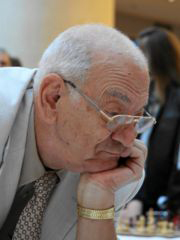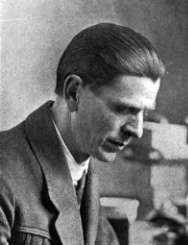|
home | what's new | other sites | contact | about |
||
|
Word Gems exploring self-realization, sacred personhood, and full humanity
from http://whitecrowbooks.com/michaeltymn/entry/chess_game_offers_strong_evidence_for_life_after_death/
The Viktor Korchnoi vs. Géza Maróczy chess game, which began in 1985 and ended in 1993, lasting 7 years and 8 months, is without a doubt one of the most intriguing cases ever in the annals of psychical research. It was reported by Dr. Wolfgang Eisenbeiss and Dieter Hassler in the April 2006 issue of the Journal of the Society for Psychical Research.
‘This case appears to be one of the most remarkable cases supporting evidence for survival of an intelligent component of human existence after bodily death,’ opines Dr. Vernon M. Neppe, director of the Pacific Neuropsychiatric Institute in Seattle, Washington, and professor in the department of neurology and psychiatry at St. Louis University in Missouri, himself a chess champion at a more modest level than Korchnoi and Maróczy, who were ranked 13th and 29th, respectively, all-time in a 1978 study. The match was arranged by Eisenbeiss, a Swiss stockbroker and a doctor of economics with a long-standing interest in psychical research. Knowing that Eisenbeiss had considerable experience in studying mediums, a dentist named Waldhorn, suggested to Eisenbeiss that he attempt to initiate a chess game between a living person and a deceased person.
Intrigued by the idea, Eisenbeiss persuaded Korchnoi, known as Viktor the Terrible (pictured above), who had defected from the Soviet Union and was living in Switzerland, to take part in the experiment. He then asked Robert Rollans (1914-1993), a long-time acquaintance and an automatic-writing trance medium who was living in Germany, to participate. Rollans was a particularly good candidate as he did not know how to play chess and was willing to participate without remuneration. Moreover, Eisenbeiss had complete confidence in Rollans’ integrity. Eisenbeiss then gave Rollans a list of deceased grandmasters and requested that he have his control spirits (Tata and Gabriel) attempt to locate one of them in the spirit world and agree to such a match. On June 15, 1985, Tata and Gabriel communicated and said that Maróczy (seen below) would accept the challenge. They then said that Maróczy would attempt to communicate directly.
‘I am Maróczy Géza,’ he wrote through Rollans’ hand. ‘I say hello to you [Continuing in German.]. I can talk German so first of all I can answer the identifying question. It was the opening with the king’s pawn and the French defence. I am unable to continue. I will finish writing. [Letters became untidy] I am going to tell everything to my friends. [Continuing in Hungarian.] Goodbye.’ Tata and Gabriel returned, explaining that because Maróczy was not accustomed to writing through an earthly arm, he tired quickly. However, he was able to convey the second move to them, d2-d4. It is not clear from the report, but these were apparently test questions which Eisenbeiss devised beforehand to be sure that a grandmaster was taking up the challenge and not some impostor spirit. Before the game actually got underway, Maróczy expressed concerns about his ability to compete because he had gone so long without practice. ‘I was and will be at your disposal in this peculiar game of chess for two reasons,’ he communicated. ‘First because I also want to do something to aid mankind living on earth to become convinced that death does not end everything, but instead the mind is separated from the physical body and comes up in a new world, where individual life continues to manifest itself in a new unknown dimension.’ His second reason had to do with the glory of Hungary. The game started with Maróczy making the first move, writing ‘e4’ through Rollans’ hand. Rollans sent the move to Eisenbeiss, who sent it on to Korchnoi. Korchnoi responded with ‘e6’ to Eisenbeiss, who forwarded it to Rollans. (It should be noted that Eisenbeiss gave Rollans some basic lessons so that he would know where to place the pieces.) ‘During the opening phase Maróczy showed weakness,’ Korchnoi commented after the 27th move. ‘His play is old-fashioned. But I must confess that my last moves have not been too convincing. I am not sure I will win. He has compensated the faults of the opening by a strong end-game. In the end-game the ability of a player shows up and my opponent plays very well.’ In his detailed analysis of the game, Dr. Neppe states that the alleged Maróczy ‘played at least at the Master level, and very debatably and less likely, at a rusty, lowish grandmaster level.’ He adds that this level could not have been achieved by Rollans even after much training, assuming that he was not a chess genius. He also points out that Maróczy’s slow start may have been the result of an opening theory that developed after his death. ‘Because of major stylistic differences, the computer could not have simulated the game, nor could many living chess players play at this high a level,’ Neppe further offers. ‘Early outside validators (news media, analysis by an expert player) militates against fraudulent collaboration.’ Because Korchnoi was frequently traveling and e-mail not yet available, the match proceeded slowly. According to Rollans, he would feel a tickle in his body when Maróczy was ready to communicate a move to him. It usually took about 10 days for Eisenbeiss to receive the next move from Maróczy/Rollans after receiving Korchnoi’s move and mailing it to Rollans. As might be expected, the skeptics suspect that Rollans was consulting with live chess experts before communicating his move back to Eisenbeiss. Neppe believes this unlikely as the play was ‘stylistically compatible with Maróczy.’ ‘It’s ridiculous to think that Rollans would have asked other grandmasters what he should give me as a move,’ Dr. Eisenbeiss writes. He adds that Rollans was as curious about the results as he was, and so was Korchnoi. He stresses that neither Rollans nor Korchnoi was paid for his participation and so there was no real motive to cheat. ‘Let them believe [what they want],’ Eisenbeiss says, pointing out that there will always be people unable to accept the truth of such phenomena. It was more personal information coming from Maróczy that convinced Eisenbeiss that he was actually communicating with Maróczy and which Neppe cites as significantly reducing the potential for fraud. During the match, Eisenbeiss put many questions to Maróczy in order to confirm his identity. While the answers to some of them might be found with limited research, most required extensive research and involved some private information. On July 31, 1986, Rollans received 38 handwritten pages from Maróczy in response to some questions. He also said that he was disappointed in his play, which he felt was due to his rustiness as well as difficulties in communication transmission. In order to confirm the accuracy of Maróczy’s responses, Eisenbeiss contacted the Hungarian Chess Club and was put in touch with Laszlo Sebestyen, a historian and chess expert, who agreed to do some research and determine if the answers were correct. Sebestyen was led to believe that the information was for some kind of biographical work on Maróczy. Sebestyen, who was paid for his services, consulted several libraries in Hungary and Maróczy’s two surviving children, both over 80 at the time, and a cousin. He put in more than 70 hours in finding the answers to nearly all of Eisbenbeiss’ questions. Out of 92 statements made by Maróczy, Sebestyén was able to confirm 85 of them as factual. The remaining seven may have been factual, but no records could be found to confirm them or the records were unclear. One particularly evidential exchange between Eisenbeiss and Maróczy (through Rollans, of course) had to do with a match Maróczy had in 1930. Eisenbeiss, who had found a record of the match, asked Maróczy about the player he had defeated, an Italian named Romi. Maróczy replied that he never knew anyone by that name, but that he did defeat a man named ‘Romih.’ Even though the historical records showed the name as ‘Romi,’ Eisenbeiss found a program of the 1930 match in which the name was spelled ‘Romih.’ Because Korchnoi was frequently traveling and competing, the game was drawn out for those seven-plus years. Maróczy, who played in an ‘old fashioned’ style, resigned after 47 moves. Rollans died three weeks after the completion of the game. Dr. Neppe also feels that the Super Psi theory advanced by some parapsychologists is less likely than the spirit hypothesis as Super Psi would have required the active cogitation of a master chess player or players while alive, extended over a prolonged period of time. The bottom line here is that the Korchnoi vs. Maróczy chess game strongly suggests that consciousness survives physical death and lives on in a spirit world. At his website, author and researcher Miles Edward Allen ranks the case as the third most evidential among his top 40 cases. Michael Tymn is the author of The Afterlife Revealed: What Happens After We Die, Resurrecting Leonora Piper: How Science Discovered the Afterlife, and Dead Men Talking: Afterlife Communication from World War I.
|
||
|
|


